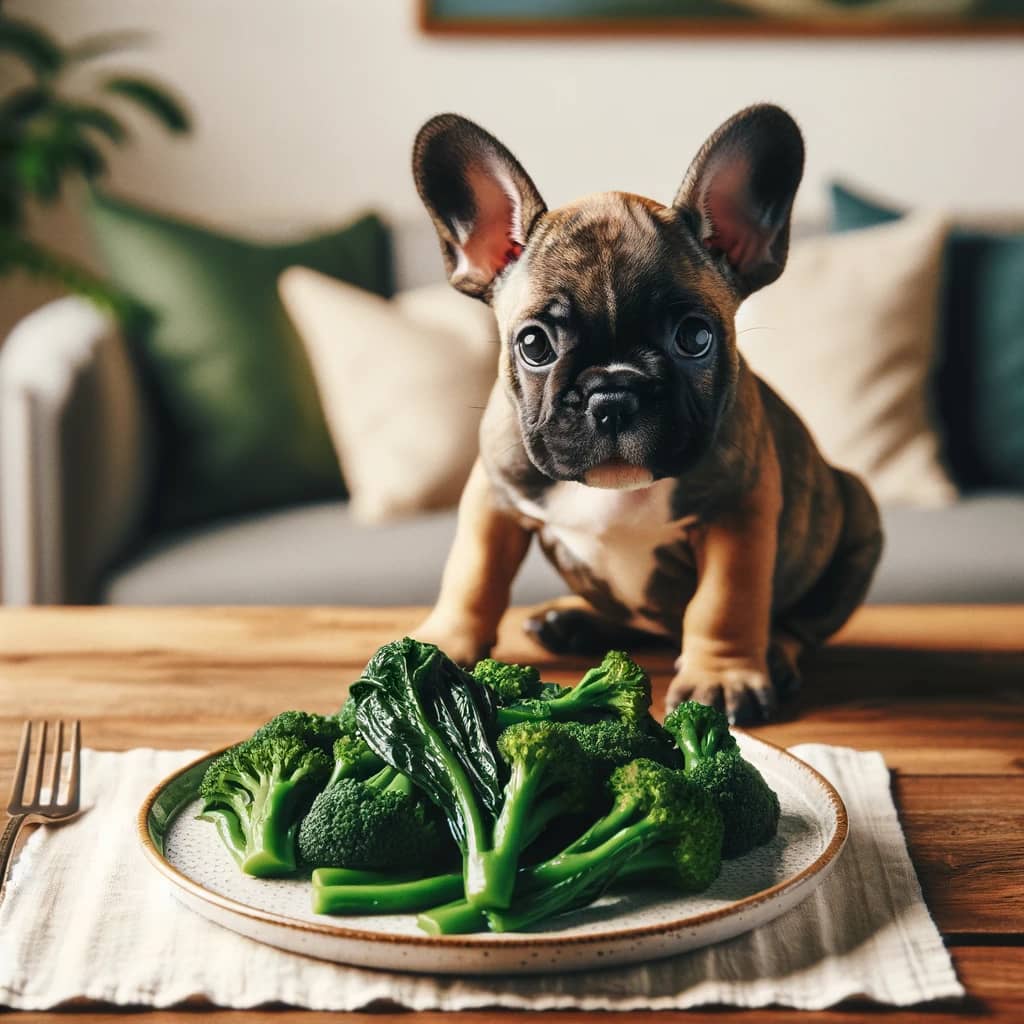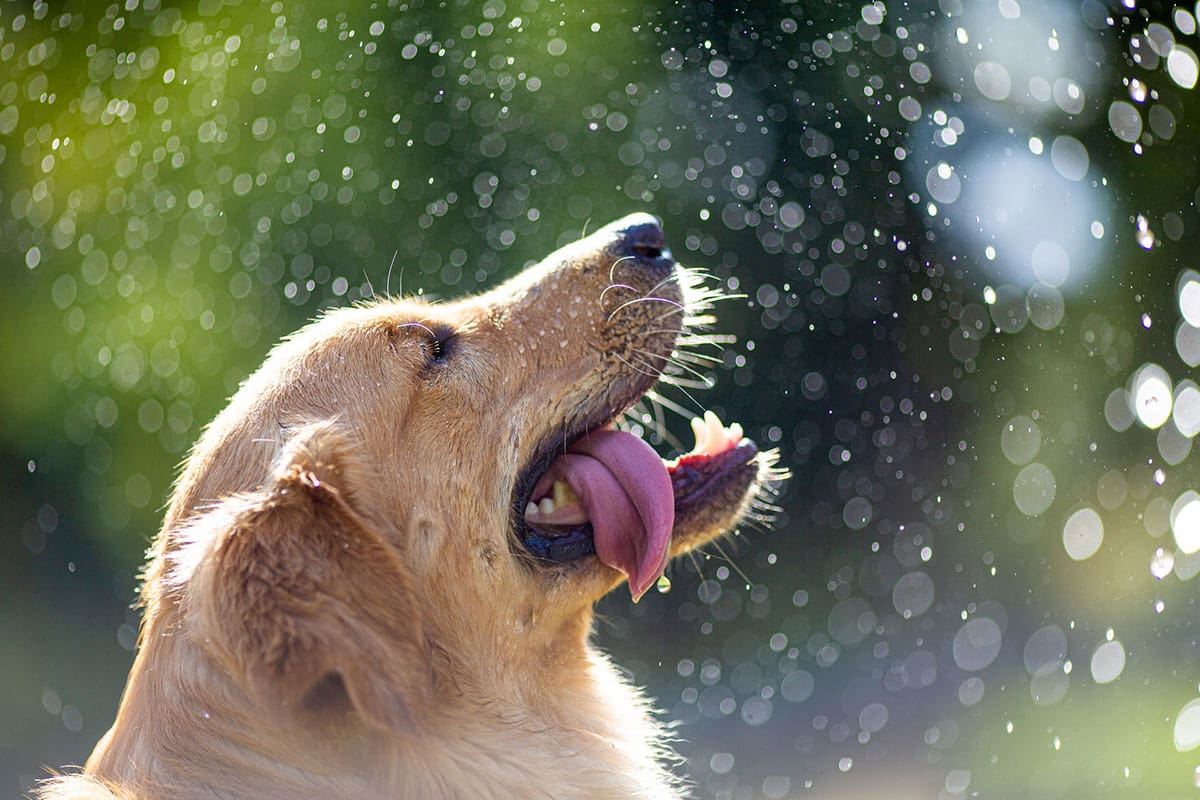Introduction to Dogs’ Diet and Broccoli Rabe
Ever wondered what greens can do for your furry friend’s bowl? Let’s dig into the world of dogs’ diet, focusing on a lesser-known veggie: broccoli rabe. It’s not just about the kibble; a balanced diet is pivotal for your pooch’s peak health!
Table of Contents
Understanding Dogs’ Nutritional Needs
What’s on your dog’s plate? Proteins, fats, and carbohydrates are the headline acts, but vitamins and minerals also play a star role. Vegetables? They’re the unsung heroes, providing fiber and essential nutrients. But before you revamp Rover’s menu, let’s ensure we’re choosing the right greens.
What is Broccoli Rabe?
Broccoli rabe, the mysterious cousin of the broccoli we all know, is a powerhouse of nutrients with a peppery punch. This leafy green is more than just a side dish for humans; it’s a vitamin-rich vegetable that could offer a new twist to your dog’s diet. But is it the right choice? Stay tuned as we explore this intriguing question.
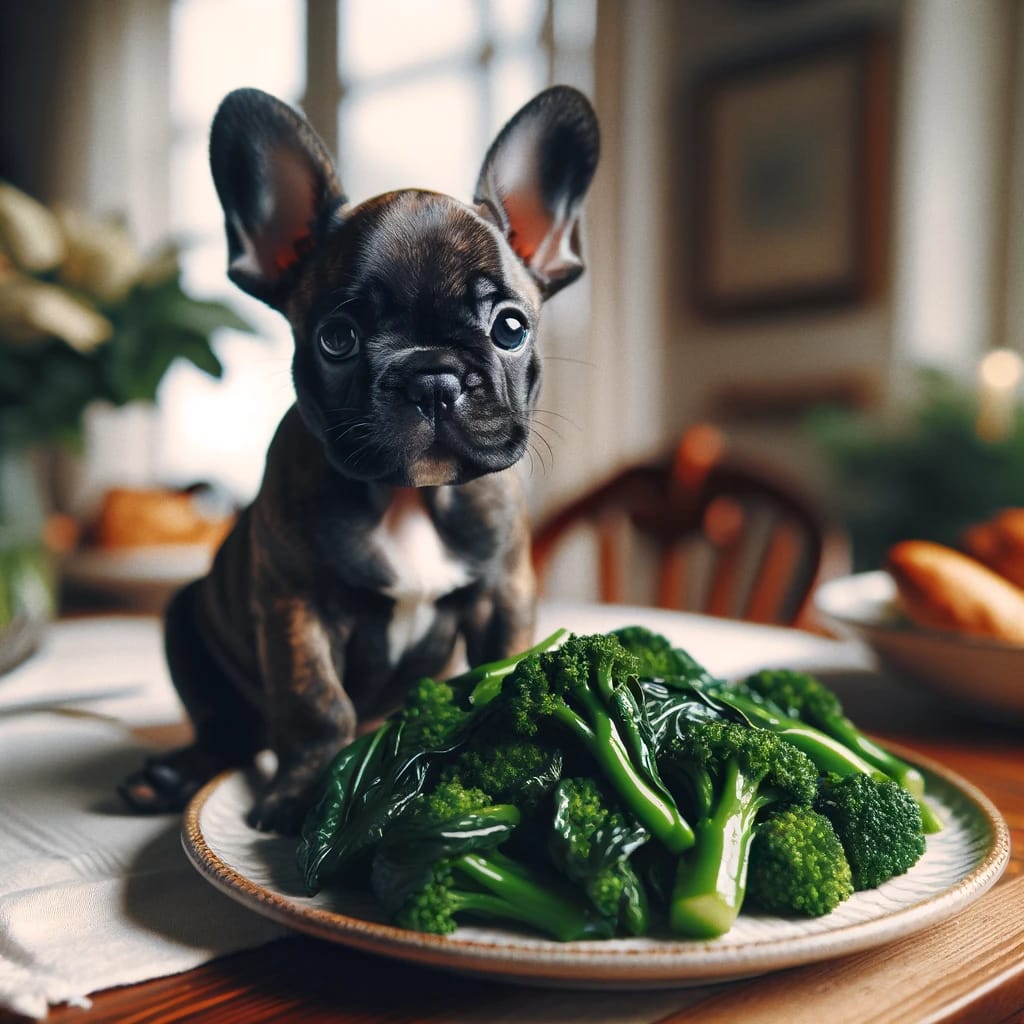
Can Dogs Eat Broccoli Rabe?
When it comes to our furry friends, we’re always on the lookout for nutritious additions to their diet. Can dogs eat broccoli rabe? This is a question that might have crossed your mind as you seek to diversify your dog’s meals with healthy options. Let’s dig into the facts and uncover the truth behind this leafy green’s compatibility with your dog’s dietary needs.
The Nutritional Compatibility of Broccoli Rabe for Dogs
Broccoli rabe, also known as rapini, is packed with essential nutrients that can be beneficial for humans, but what about dogs? Dogs have their own unique set of dietary requirements. Broccoli rabe contains vitamins A, C, and K, along with minerals like calcium and iron. These nutrients can support a dog’s vision, immune system, bone health, and more. However, it’s crucial to understand that dogs process foods differently than humans. While broccoli rabe isn’t toxic to dogs, it should only be served in moderation due to its potential to cause gastrointestinal upset if overconsumed.
Introducing Broccoli Rabe to Your Dog’s Diet
Are you considering adding broccoli rabe to your pup’s bowl? If so, it’s essential to start slowly. Introduce a small amount of steamed or boiled broccoli rabe to observe how your dog reacts. Cooking the vegetable can help make it easier to digest and reduce the risk of choking on tough stems. Remember, raw vegetables can be hard on a dog’s digestive system, so it’s best to avoid them.

Broccoli Rabe: A Treat, Not a Staple
While broccoli rabe can be a healthy treat, it’s important to remember that it should not replace your dog’s regular diet. Dogs require a balanced diet tailored to their specific needs, and while broccoli rabe can be a part of that, it should never be the main course. Think of broccoli rabe as a supplement to your dog’s meal—providing a boost of nutrients in small, controlled portions.
Health Benefits of Broccoli Rabe for Dogs
Have you ever wondered if the leafy greens you enjoy could benefit your furry friend? Let’s dive into the health benefits of broccoli rabe for dogs. This vegetable isn’t just a tasty side dish for your dinner plate; it could be a nutritious snack for your pooch too!
Vitamins and Minerals in Broccoli Rabe
Broccoli rabe is a powerhouse of vitamins and minerals that can do wonders for your dog’s health. Rich in vitamins A, C, and K, as well as minerals like calcium and iron, broccoli rabe supports everything from bone health to immune function. For instance, vitamin A promotes healthy skin and vision, while vitamin C is known for its antioxidant properties, combating free radicals and supporting overall wellness.
Let’s look at a table representation of the nutritional content per 100 grams of broccoli rabe:
| Nutrient | Amount |
|---|---|
| Vitamin A | 262 IU |
| Vitamin C | 20.2 mg |
| Vitamin K | 224 mcg |
| Calcium | 108 mg |
| Iron | 2.14 mg |
With such a nutrient-dense profile, it’s clear that broccoli rabe can be a beneficial addition to your dog’s diet. However, it’s essential to remember that moderation is key, as with any food.

Potential Risks of Feeding Broccoli Rabe to Dogs
While broccoli rabe can be a nutritious addition to your furry friend’s menu, it’s crucial to approach this green with a hint of caution. As a responsible pet owner, you’re right to ask: Could there be a downside to this veggie?
Let’s dive into the potential risks that could come with feeding broccoli rabe to dogs. We’ll look at the facts, so you can make informed decisions when it comes to your dog’s diet.
Isocyanates: A Bitter Compound
Broccoli rabe contains compounds known as isocyanates, which can cause mild to moderate gastrointestinal upset in some dogs. If your dog has a sensitive stomach, introducing broccoli rabe slowly is essential to monitor their reaction.
Thiocyanates: A Word of Caution
Another point of consideration is the presence of thiocyanates in broccoli rabe. These compounds can potentially lead to hypothyroidism if consumed in large quantities. However, the risk is minimal when broccoli rabe is served in moderation as part of a balanced diet.
Risk of Choking
Just like with any other food, there’s a risk of choking, especially if the broccoli rabe is not properly prepared. Cutting it into bite-sized pieces can mitigate this risk and ensure a safer snacking experience for your dog.
Table Representation of Safe Serving Sizes
| Dog Size | Safe Serving Size |
|---|---|
| Small | 1-2 small florets |
| Medium | 2-3 small florets |
| Large | 3-4 small florets |
Remember, these are general guidelines. Always consult with your vet before making changes to your dog’s diet.
How to Safely Introduce Broccoli Rabe into Your Dog’s Diet
Have you ever wondered if you can share your love for greens with your furry friend? Broccoli rabe, a leafy green full of nutrients, might just be a healthy addition to your dog’s diet. But before you start chopping up these veggies, let’s ensure we do it safely, shall we?
Start Small and Observe
Begin by introducing broccoli rabe in small quantities. A good rule of thumb is to start with a piece the size of your dog’s kibble. Keep an eye out for any signs of gastrointestinal upset such as diarrhea or vomiting. If your dog seems to tolerate it well, you can gradually increase the amount.
Steam to Soften
Raw vegetables can be tough on a dog’s digestive system. Steaming broccoli rabe softens the fibers, making it easier for your pooch to digest. Plus, it retains most of the nutrients that make it such a stellar snack!
Mix with Familiar Foods
Introduce broccoli rabe by mixing it with foods your dog already enjoys. This can help your dog get used to the new flavor and texture. A dollop of their favorite wet food or a sprinkle over their dry kibble can be quite enticing!
Monitor Portion Sizes
Even healthy foods can be harmful in large quantities. Keep broccoli rabe to less than 10% of your dog’s daily diet to prevent nutrient imbalances. Remember, treats and snacks should not exceed this percentage.
Consult Your Vet
Before making any changes to your dog’s diet, it’s always best to consult with your veterinarian. They can provide personalized advice based on your dog’s specific health needs and dietary requirements.
Frequently Asked Questions (FAQs)
Is broccoli rabe toxic to dogs?
Broccoli rabe, also known as rapini, is not toxic to dogs. However, it’s important to serve it in moderation. Just like humans, dogs can have too much of a good thing. Broccoli rabe contains isothiocyanates, which can cause gastrointestinal irritation if consumed in large quantities. So, a small amount as a treat is fine, but don’t go overboard.
How much broccoli rabe can I give my dog?
When it comes to portion size, think of broccoli rabe as a garnish rather than a main course for your pup. A good rule of thumb is that vegetables should not make up more than 10% of your dog’s daily diet. Start with a small piece to see how your dog reacts, and always chop it up to prevent choking hazards. It’s best to consult with your vet for personalized advice, especially if your dog has specific health issues.
Can puppies eat broccoli rabe?
Puppies have delicate digestive systems, so introducing new foods like broccoli rabe should be done with caution. If your puppy is already on a balanced diet, you might not need to add vegetables just yet. If you decide to offer broccoli rabe, make sure it’s in tiny, manageable amounts and always observe for any adverse reactions. Puppies are growing rapidly, and their main focus should be on high-quality puppy food that meets all their nutritional needs.
Can broccoli rabe replace a meal for my dog?
Definitely not. While broccoli rabe can be a healthy addition to your dog’s diet, it should never replace a meal. Dogs require a balanced diet that is high in protein and meets all their nutritional needs. Think of broccoli rabe as a vitamin boost rather than a meal replacement. Always ensure that the core of your dog’s diet is a high-quality dog food that’s appropriate for their age, size, and activity level.
Are there other vegetables that are safe for my dog to eat?
Absolutely! Many dogs enjoy a variety of vegetables as part of a balanced diet. Carrots, green beans, and pumpkin are popular choices that are low in calories and high in nutrients. They can be great for dogs that need to lose a few pounds, too. Just remember to introduce any new food slowly to avoid upsetting your dog’s stomach, and always prepare vegetables plain, without any added oils or seasonings.
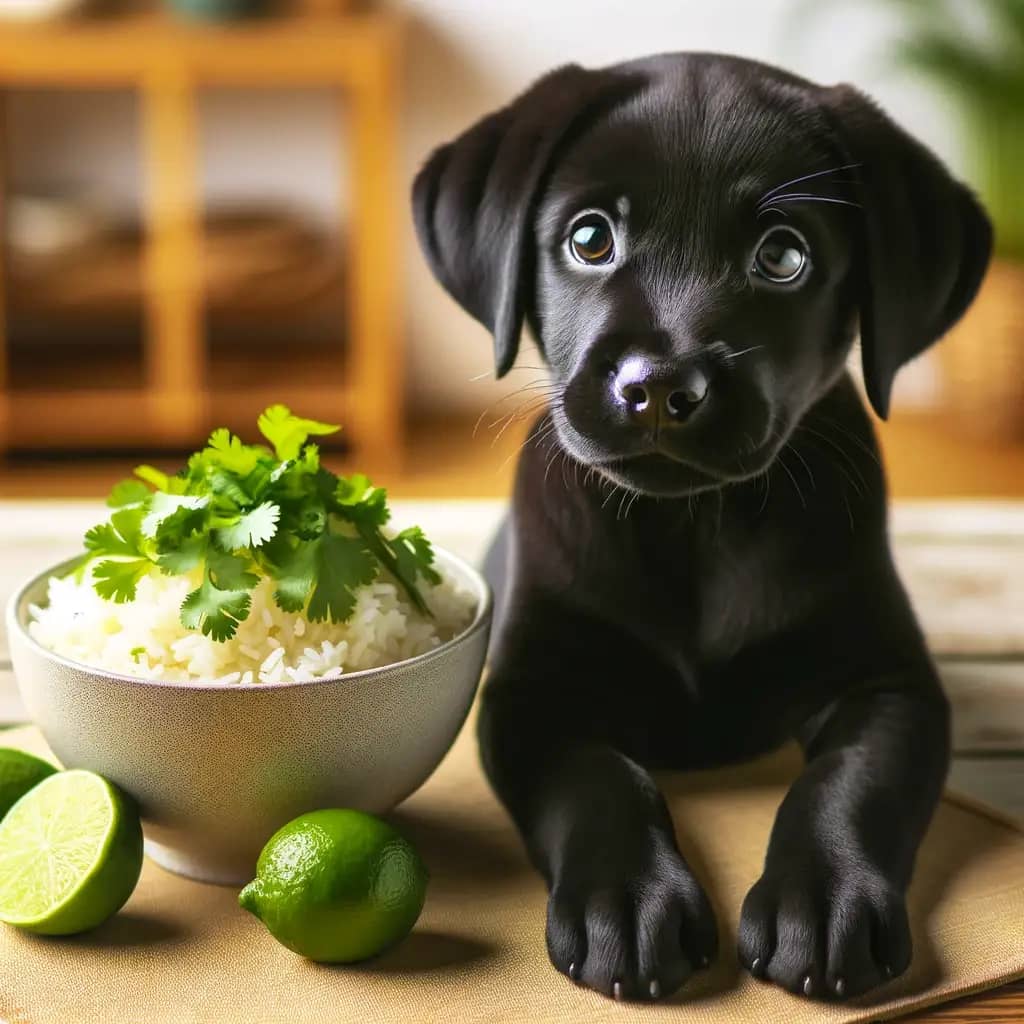
Can Dogs Have Cilantro Lime Rice: Is It a Dog-Friendly Delight?

Can Dogs Eat Babybel Cheese? Here’s What You Need to Know

Can Dogs Eat Breadfruit? Unraveling the Myths and Facts
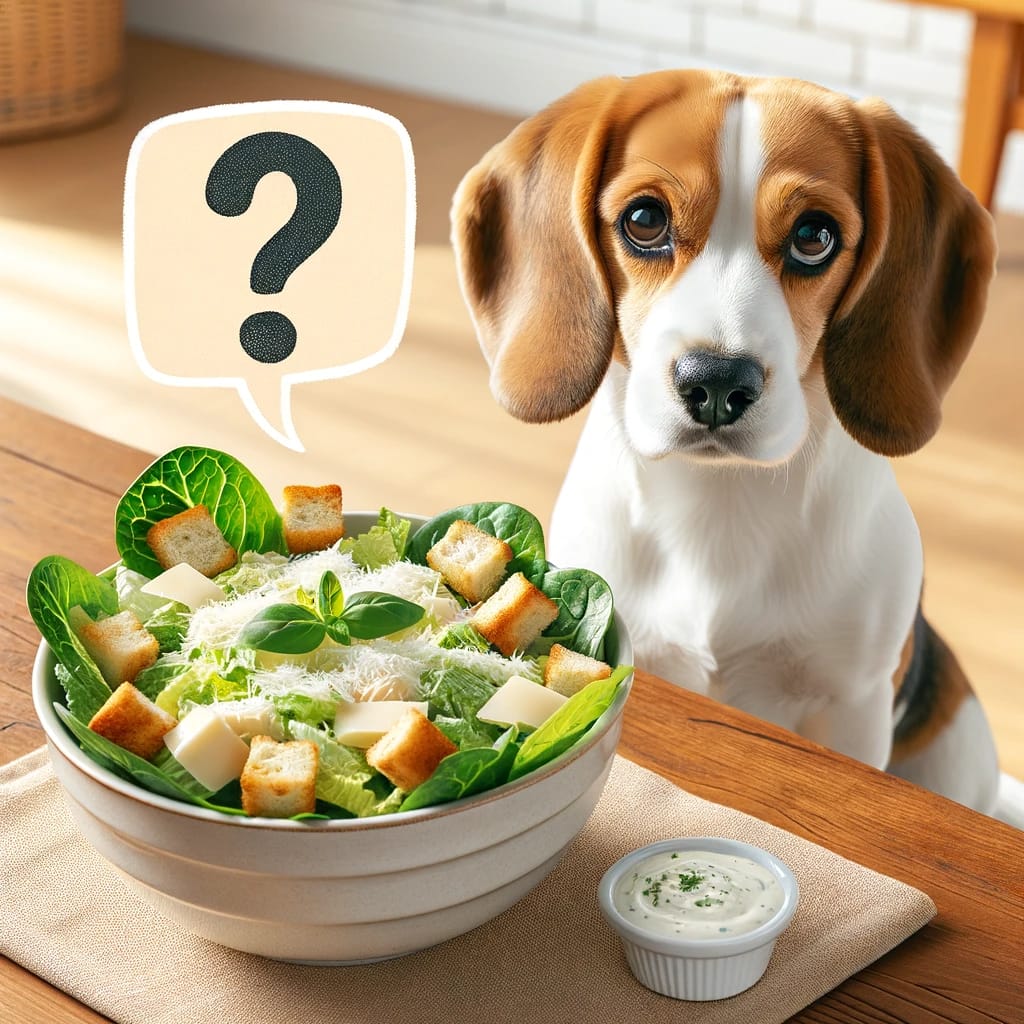
Can Dogs Eat Caesar Salad? Unpacking the Risks and Safe Alternatives
Conclusion
So, let’s circle back to our main query: Can dogs eat broccoli rabe? The journey through the nutritional landscape of dogs has been enlightening, and we’ve unearthed some key insights. We’ve learned that dogs thrive on a balanced diet, rich in proteins, fats, and yes, even vegetables. Broccoli rabe, with its treasure trove of vitamins and minerals, has emerged as a potential green gem for your furry friend’s diet.
But, as with any good story, there’s a twist. While broccoli rabe is not the villain in our tale, it must be introduced with care. Moderation and proper preparation are the trusty sidekicks that ensure this leafy green doesn’t turn into a dietary misstep. Remember, each dog is unique, and what works for one may not suit another. It’s always best to consult with your vet before making changes to your dog’s diet.
As we wrap up, let’s not forget the stats and tables that have guided our path. According to a study by the Journal of Canine Nutrition, vegetables should only make up 10% of a dog’s diet. This statistic is a helpful beacon, ensuring we don’t overstep the mark.
In conclusion, broccoli rabe can be a nutritious addition to your dog’s diet when served in appropriate amounts. It’s packed with benefits, but it’s not a standalone meal—think of it as the side dish to the main course. Always keep your pup’s health in the spotlight, and you’ll have a happy, tail-wagging companion at your side.
